Our Research
Currently, we focus on two areas.
1) Auditory perception and how this is affected by hearing loss, with a focus on binaural fusion and spectral integration.
For instance, consider binaural fusion. Nearly everyone will fuse diotic sounds (the exact same sounds) presented to the two ears via headphones.
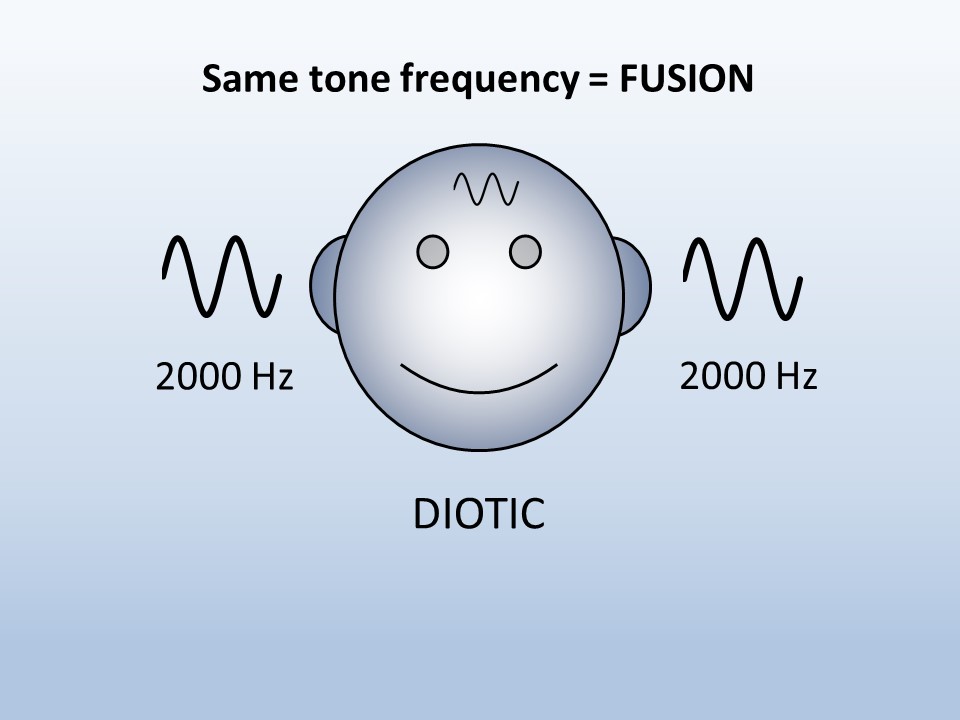
How about dichotic sounds (different sounds, such as tones of different frequency)?
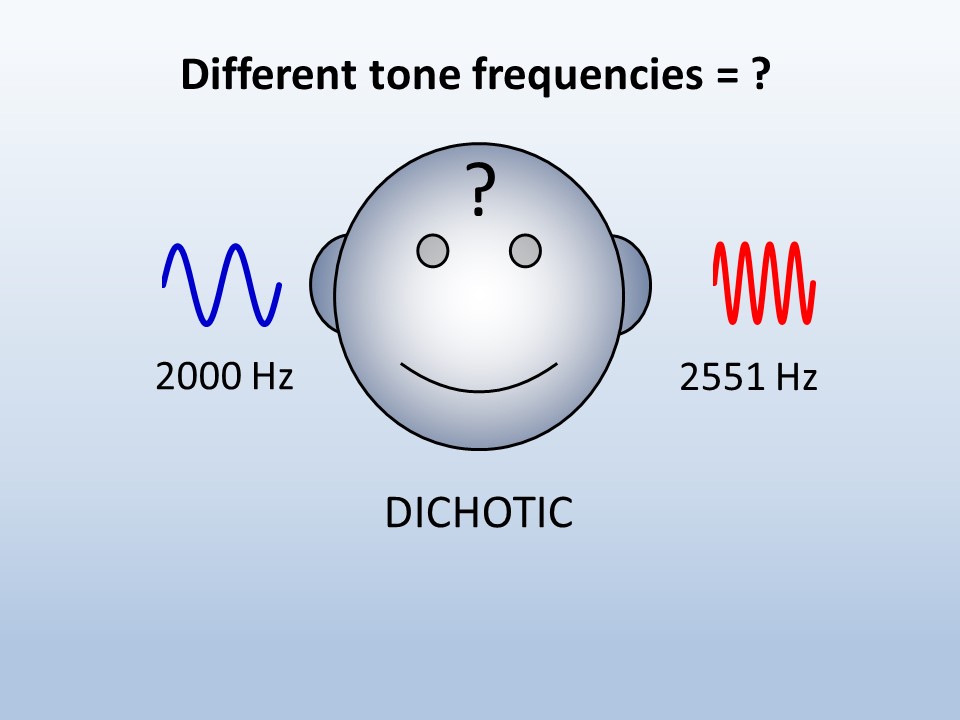
Our recent studies show that individuals with typical hearing will hear two different sounds. However, those who wear hearing aids and/or cochlear implants often fuse more broadly across frequencies (e.g. Reiss et al., JARO 2014; Reiss et al., JASA 2017). This leads to less precise fusion of mismatched spectral information across ears, averaging of the two ear percepts similar to what is seen for color between the two eyes (Oh and Reiss, 2017). and in some cases, even interference for speech perception (Two ears are not always better than one: Reiss et al., JARO 2014).
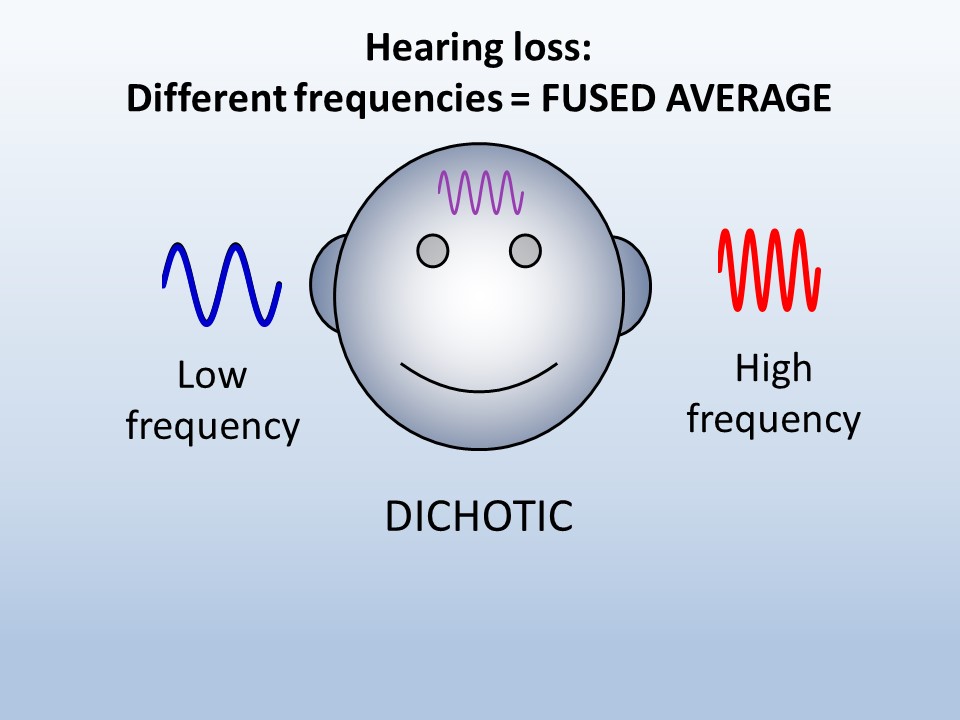
This leads to the next question: How does abnormal binaural fusion affect the ability to form and segregate auditory objects (such as speech sounds)?
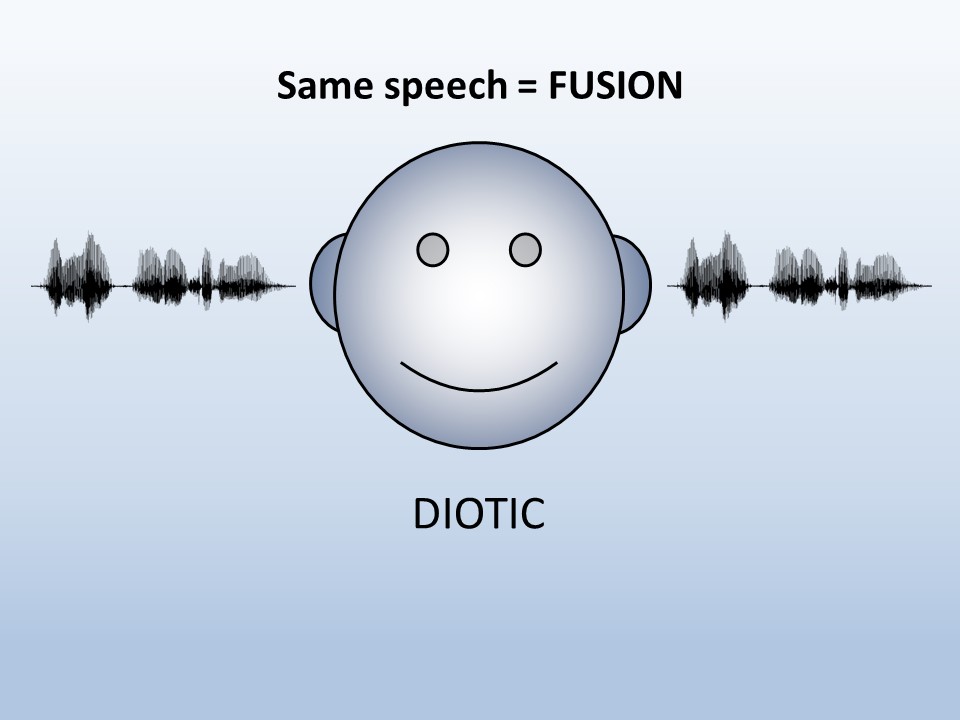
As for tones, nearly everyone will fuse the same speech either presented to both ears via headphones, or in the free field when presented via loudspeakers.
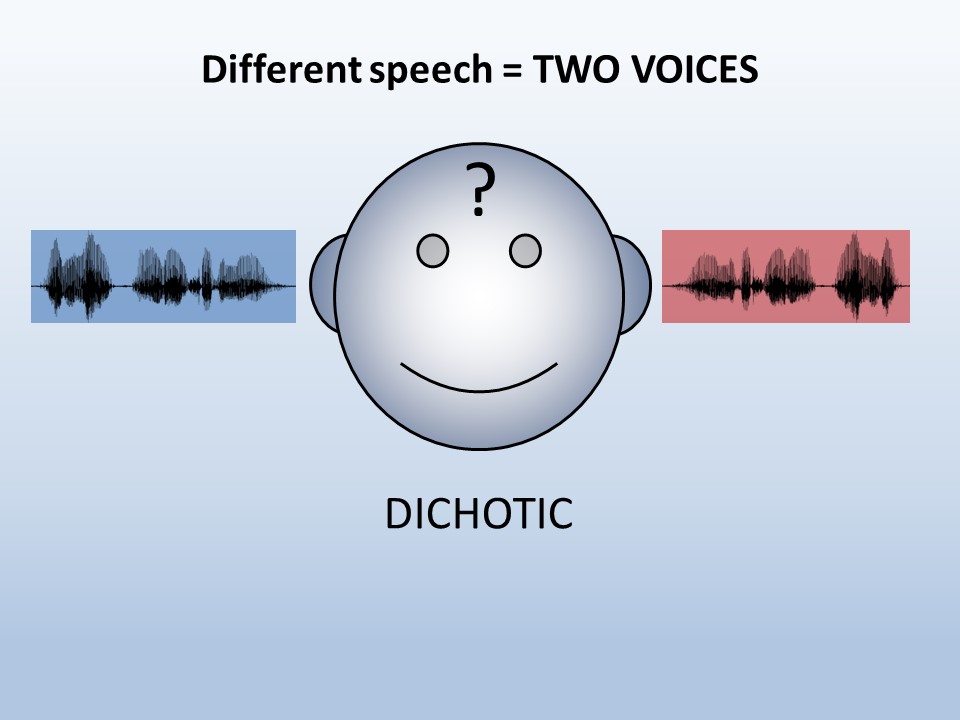
When different speech is presented and the voices are different (such as a male and female voice), those with typical hearing will hear two different streams and the question is "Which voice do I pay attention to? And which person said which words?". In the real world, where one has to attend to and separate out one talker from several people talking simultaneously, such as at a large party, this is known as the cocktail party problem.
Those with hearing loss often have a very different problem. We showed for the first time that for dichotic vowel sounds presented over headphones, listeners with hearing loss and abnormally broad binaural tone fusion would also perceptually fuse different voices together (Reiss and Molis, JARO 2021). This broad fusion and inability to segregate voices extends to the free field in realistic multi-talker environments (Oh et al., Biorxiv 2019).
Our lab is continuing further research into these phenomena.
2) Auditory nerve health, and how this is affected by cochlear implantation surgery and by electrical stimulation.
Current/future experiments: